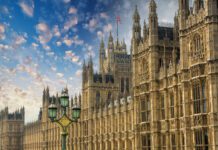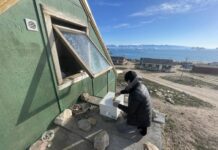The levels of air pollution in Glasgow rose by nearly a third during the climate summit, according to data released by sensor firm Aeternum.
Nitrogen dioxide (NO2) levels reached a peak during the conference on 8 November, when the firm’s sensor recorded an average of 48 μg/m3 for the day – this is 93 per cent higher than the World Health Organisation’s (WHO) 2021 Air Quality Guidelines, which recommend NO2 levels should not exceed an average of 25pg/m3 in any 24-hour period.
Aeternum’s air quality sensor is positioned under the Kingston Bridge, one of the busiest bridges in Europe, less than a mile from the Scottish Event Campus (SEC) where COP 26 was held.
The sensor found the average concentration of NO2 during the two weeks of the conference had increased by 30 per cent from October’s average.
The average level of NO2 began to drop in the days following the end of the conference, falling back down to 29μg/m3 by 29 November.
The data follows a similar trend to two air quality sensors installed by the UK’s Government’s Department for Environment, Food and Rural Affairs (DEFRA) around Glasgow during the same time period, which recorded a peak in NO2 during the conference.
Paul Carter, founder of Aeternum, said: “When we compared our findings with those of DEFRAs monitoring stations, we identified a general trend that average NO2 levels increased during the event and later fell to almost its previous levels.”
He continued: “There has been much speculation about the potential environmental impact of holding such a large global event that saw many delegates arriving and departing via modes of transport that are harmful to the environment.
“Our sensor is positioned along a main walkway leading to the SEC, enabling us to gather a clear picture of the air many attendees were breathing during the conference. By accurately monitoring hyperlocal air quality, local councils and communities can gather a clear, real-time picture of the impact of pollutants in the air local people are breathing – and make informed decisions about how best to manage them.”









